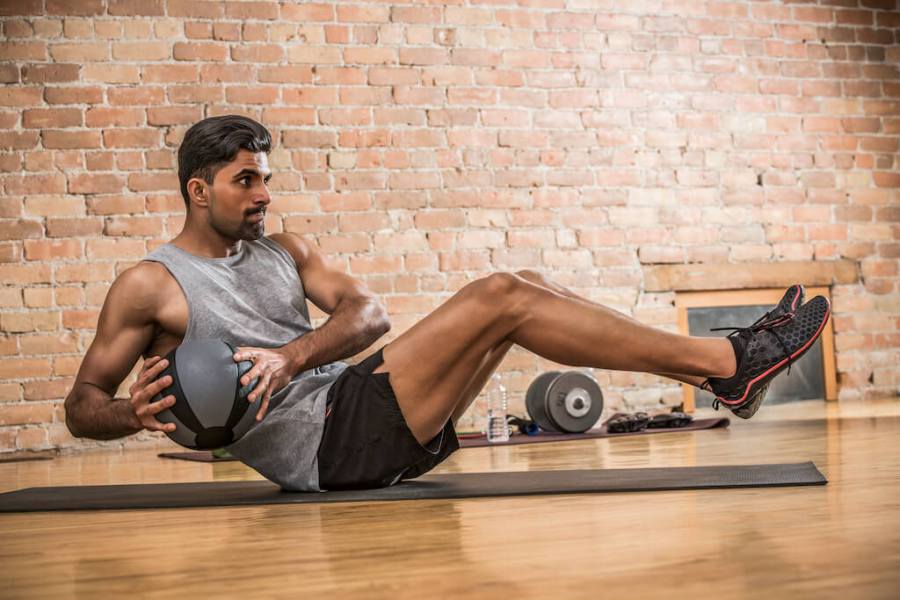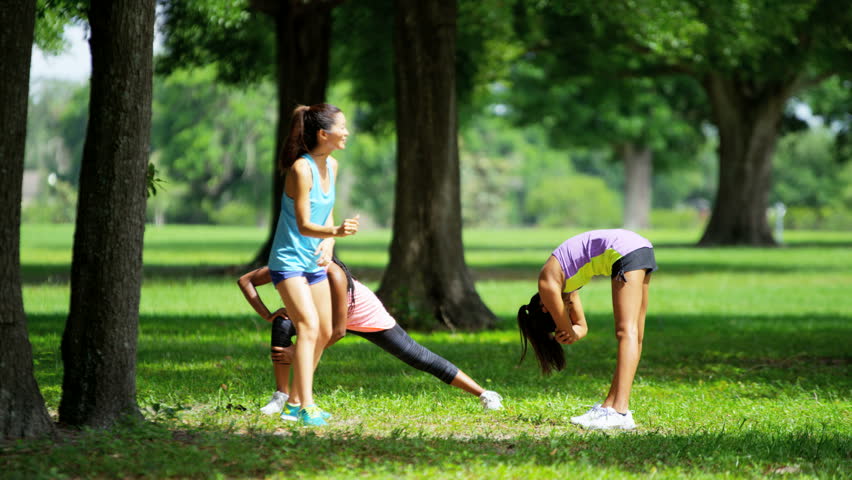Analyze the impact of different exercise modalities on various health and fitness outcomes.
Explore how different exercise modalities affect health and fitness outcomes. Discover the significant Exercise Impact on Health

Exercise is a critical component of a healthy lifestyle and can have a significant impact on various health and fitness outcomes. Different exercise modalities, such as aerobic, strength training, flexibility, and high-intensity interval training (HIIT), can produce distinct effects on the body. Here's an analysis of the impact of these modalities on various health and fitness outcomes:
Aerobic Exercise Cardiovascular Training
Cardiovascular Health
Aerobic exercises like running, swimming, and cycling improve heart health by strengthening the heart muscle and enhancing its efficiency. They can reduce the risk of heart diseases, lower blood pressure, and improve cholesterol levels.
Weight Management: Aerobic exercise is effective for burning calories and promoting weight loss or maintenance. It helps reduce body fat and improve metabolism.
Endurance: Regular aerobic training increases endurance and stamina, allowing individuals to perform daily tasks with less fatigue.
Strength Training (Resistance Exercise):
Muscle Strength and Mass: Strength training, which includes weightlifting and bodyweight exercises, helps build muscle strength and mass. This not only improves physical appearance but also enhances functional abilities.
Bone Health: Resistance exercises stimulate bone density, reducing the risk of osteoporosis and fractures.
Metabolism: Increased muscle mass boosts resting metabolic rate, making it easier to manage body weight and fat levels.
Flexibility and Mobility Exercises:
Range of Motion: Stretching exercises like yoga and Pilates enhance flexibility and joint mobility, reducing the risk of injury and improving posture.
Stress Reduction: These modalities promote relaxation and mental well-being, reducing stress and anxiety.
Balance and Coordination: Improved flexibility can lead to better balance and coordination, reducing the risk of falls, especially in older individuals.
High-Intensity Interval Training (HIIT):
Cardiovascular Fitness: HIIT involves short bursts of intense activity followed by brief rest periods. It can rapidly improve cardiovascular fitness, often more efficiently than traditional aerobic exercise.
Time Efficiency: HIIT workouts are usually shorter but can provide similar or even better fitness outcomes, making them ideal for busy schedules.
Metabolic Benefits: HIIT can increase post-exercise calorie burning and improve insulin sensitivity, aiding in weight management and reducing the risk of type 2 diabetes.
Mind-Body Modalities (e.g., Tai Chi, Qigong):
Stress Reduction: Mind-body exercises focus on the integration of physical movement and mental concentration, promoting relaxation and reducing stress.
Balance and Coordination: These modalities often emphasize balance and coordination, which can improve physical function, especially in older adults.
Mental Well-being: Mind-body practices may enhance mental clarity, concentration, and emotional well-being.
Cross-Training:
Combining different exercise modalities can provide a well-rounded approach to health and fitness, offering benefits across various domains.
Individual Variability:
The impact of exercise modalities can vary from person to person based on factors like age, fitness level, genetics, and individual goals.
In conclusion, different exercise modalities have unique effects on health and fitness outcomes. An ideal fitness routine often incorporates a combination of aerobic, strength, flexibility, and HIIT training to achieve a well-rounded approach to physical fitness and overall well-being. It's important to tailor your exercise program to your specific goals and needs while considering individual variability. Always consult with a healthcare provider or fitness professional before starting a new exercise regimen, especially if you have underlying health conditions.
Recovery and Rest:
It's important to recognize that recovery and adequate rest are integral components of any exercise routine. Overtraining or not allowing enough time for muscles to recover can lead to injuries and hinder progress. Rest days, sleep, and proper nutrition are crucial for optimizing the benefits of exercise.
Weight Management and Fat Loss:
Different exercise modalities can have varying effects on weight management and fat loss. While aerobic exercises are effective for burning calories, strength training can help in building lean muscle mass, which, in turn, can increase resting metabolic rate. Combining both can be particularly beneficial for those aiming to lose weight and maintain a healthy body composition.
Longevity and Aging:
Regular exercise, including strength training and flexibility exercises, can improve the quality of life as individuals age. It can help maintain muscle mass, bone density, and joint health, reducing the risk of age-related conditions like sarcopenia and osteoporosis.
Mental Health Benefits:
Exercise has profound effects on mental health, regardless of the modality. It releases endorphins, which can reduce symptoms of depression and anxiety. Mind-body practices like yoga and meditation can also enhance mindfulness and emotional well-being.
Disease Prevention and Management:
Exercise plays a pivotal role in preventing and managing chronic diseases such as diabetes, hypertension, and heart disease. Specific exercise modalities, like aerobic training, can help improve insulin sensitivity and reduce the risk of developing type 2 diabetes.
Social and Community Aspects:
Group exercise classes or team sports can foster a sense of community and provide social support, which can be motivating and enjoyable, contributing to long-term adherence to an exercise routine.
Customization and Periodization:
Tailoring exercise modalities and intensity levels to individual goals and needs is crucial. Periodization, or changing the exercise routine over time, can help prevent plateaus and reduce the risk of overuse injuries.
Consultation and Professional Guidance:
For those new to exercise or with specific health concerns, seeking guidance from fitness professionals or healthcare providers is advisable. They can provide personalized exercise recommendations and monitor progress.
In summary, the impact of different exercise modalities on health and fitness outcomes is diverse, and the most effective routine will vary from person to person. A balanced approach that combines various modalities, incorporates rest and recovery, and aligns with individual goals is often the most successful. Regardless of the chosen modality, consistency is key to reaping the long-term benefits of exercise. Always consult with a healthcare provider or fitness expert to develop a safe and effective exercise plan tailored to your unique needs and circumstances.
Adaptation and Progression:
The human body adapts to exercise over time. To continue seeing improvements, it's essential to progressively challenge your body. This can involve increasing the intensity, duration, or complexity of your workouts, or incorporating new exercises or modalities into your routine.
Sports-Specific Training:
Some individuals engage in exercise modalities specific to their sports or activities of choice. This can include agility training for athletes, swimming for triathletes, or plyometrics for basketball players. Such targeted training helps improve performance in specific domains.
Injury Prevention and Rehabilitation:
Certain exercise modalities, like physical therapy and corrective exercises, are crucial for preventing injuries and aiding in rehabilitation. They focus on strengthening weak areas, improving posture, and enhancing mobility to reduce the risk of injuries.
Hybrid and CrossFit-Style Workouts:
Hybrid workouts combine different modalities into a single routine. CrossFit, for example, combines strength training, HIIT, and aerobic exercises for a comprehensive workout. These approaches aim to develop a broad range of physical abilities.
Age-Related Considerations:
As people age, their exercise needs and capabilities change. Older adults may benefit from low-impact activities like swimming or tai chi to protect joints and improve balance. However, they should still include strength training to maintain muscle mass and bone density.
Nutrition and Exercise Synergy:
Diet and exercise go hand-in-hand for achieving fitness goals. The right nutrition supports energy levels, muscle recovery, and overall health, complementing the benefits of exercise. Proper hydration is also vital for optimal performance.
Tracking and Measurement:
Monitoring progress is essential for staying motivated and making informed adjustments to your exercise routine. Modern technology, such as fitness trackers and apps, can help individuals track their workouts, heart rate, and other relevant metrics.
Lifestyle Integration:
Embedding exercise into daily life can be more sustainable. Simple practices like taking the stairs, walking or cycling to work, or doing household chores can contribute to overall activity levels and fitness outcomes.
Psychological Benefits:
Exercise has a profound impact on mental health, reducing stress, improving mood, and enhancing cognitive function. Engaging in exercise modalities that you enjoy can make the experience more rewarding and sustainable.
Environmental Considerations:
The choice of exercise modality can also depend on your environment. Living near a scenic trail might inspire outdoor activities like hiking or trail running, while urban dwellers may prefer gym-based workouts or indoor sports.
In conclusion, the impact of exercise modalities on health and fitness outcomes is multifaceted and depends on individual goals, preferences, and circumstances. The most effective exercise routine is one that you enjoy, can maintain consistently, and aligns with your specific objectives. Whether you're seeking cardiovascular fitness, muscle strength, stress relief, or other health benefits, a well-planned and balanced exercise program is key to achieving your desired outcomes. Always consult with professionals as needed and be adaptable in your approach to cater to changing fitness needs and goals throughout your life.
What's Your Reaction?















